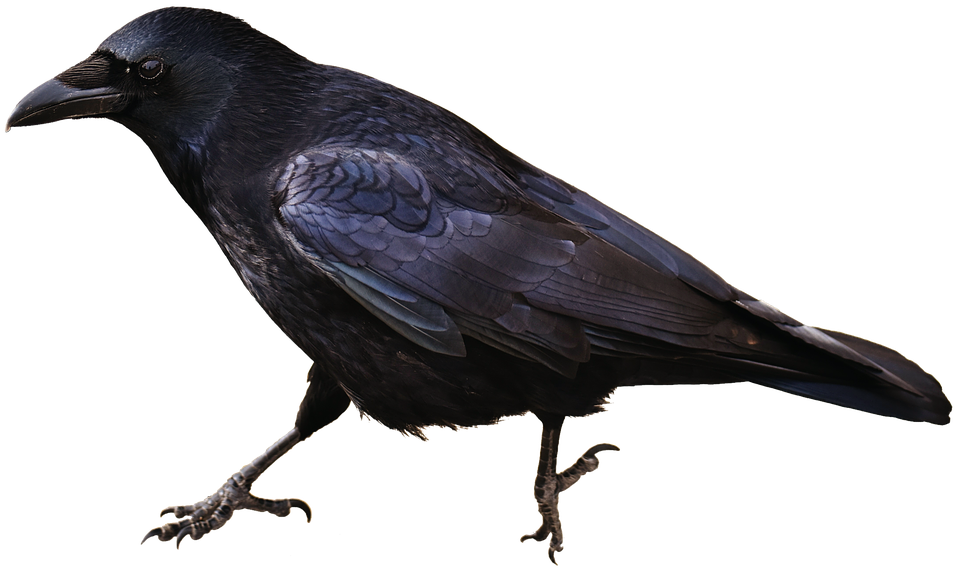Fish Crow
A species of Crows Scientific name : Corvus ossifragus Genus : Crows
Fish Crow, A species of Crows
Botanical name: Corvus ossifragus
Genus: Crows
Content
Description People often ask General Info
Description
The fish Crow is a social species and may be found alongside American crows (Corvus brachyrhynchos). The fish Crow is slightly smaller and silkier than the American crow and also has a distinct call. As its name suggests, this species is found near fresh, brackish, and saltwater waterways looking for fish and invertebrates to eat.
Size
38 - 43 cm
Life Expectancy
15 years
Nest Placement
Tree
Clutch Size
2 - 6 eggs
Incubation Period
1 brood
Number of Broods
16 - 19 days
Nestling Period
32 - 40 days
Feeding Habits
Fish Crow is omnivorous, feasting on carrion, trash, bird eggs/nestlings, berries, fruit, grain, stolen items, crabs, marine invertebrates, turtle eggs, and human scraps. Fish Crow preys on nests, especially of colonial waterbirds and various songbirds, and consumes small crustaceans, fish, reptiles, and nuts.
Habitat
Fish Crow occupies coastal habitats, favoring marshes, beaches, and estuaries near bodies of water. Adapted for mild, low-altitude areas, they are found in urban and suburban environments, including farmlands and residential areas with trees. However, they are rarer in inland regions away from water sources. In winter, fish Crow aggregates in large roosts close to abundant food sources.
Nest Behavior
The female fish Crow solely collects materials and constructs the nest over a period of 10 days or more. Males may be present but do not assist in building. Nesting sites may be close together, especially in marsh areas. After building, the female lays the eggs and is primarily responsible for their care along with the male.
Nest Characteristics
Fish Crow typically construct their nests near the tops of various trees such as evergreens, deciduous trees, palms, and mangroves, or even within heron colonies. Nests are made from a bulky collection of sticks and lined with materials like soil, bark, Spanish moss, palm fibers, hair, and pine needles. A completed nest measures around 19 inches in width with a cup approximately 5 inches across.
Dite type
Omnivorous
People often ask
General Info
Feeding Habits
Bird food type
Bird Feeder Type

Platform
Sounds
Call
Recording location: United States
Call
Recording location: United States
Call
Recording location: United States
Behavior
Fish Crow exhibit remarkable intelligence and curiosity, characteristics common to corvids. These social creatures engage in daily activities that include foraging, often around gulls, and exhibit kleptoparasitic behavior by snatching food from these birds. During breeding season, they form monogamous pairs, while in colder months, they display communal behavior, gathering in large flocks. Fish Crow are playful, partaking in activities such as swinging upside down, indicative of their inquisitive nature. They are known to participate in mobbing predators in unison with other corvids, thereby protecting their territory. When confronted by an American Crow, a slight size disadvantage dictates their submissive response, retreating from the altercation.
Distribution Area
This species occurs on the eastern seaboard of the United States from Rhode Island south to Key West, and west along the northern coastline of the Gulf of Mexico and follows many river systems inland for quite some distance. 
Species Status
This species appears to be somewhat more resistant to West Nile virus than the American crow. Survival rates of up to 45% have been reported for fish crows, compared with near zero for American crows. 
Scientific Classification
Phylum
Chordates Class
Birds Order
Perching birds Family
Crows and jays Genus
Crows Species
Fish Crow 